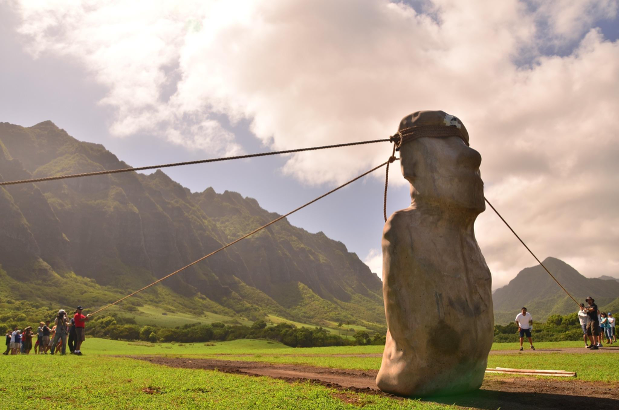The monolithic human figures of Rapa Nui, called Moai, are among the most recognizable statues in the world. There are 900 of them carved and erected between 1250 and 1500 CE. The making and transportation of these colossal statues became part of the oral traditions, and when the people of Rapa Nui were quizzed by foreign archaeologists, they explained that the statues “walked”. Physics and historical evidence agree.
The rest of this article is behind a paywall. Please sign in or subscribe to access the full content.
The tallest Moai erected was 10 meters (33 feet) high and weighed 82 metric tons; the heaviest was 86 metric tons. Shifting them was a feat of engineering, and over the last many decades, many explanations have been put forward to explain how they were moved on an island that is almost completely treeless now.
There have been suggestions of sleds and rollers being used to move the statues to their destination. In the 1980s, the idea of walking the statue was taken seriously, with tests set out to reproduce a possible approach using ropes. Damage to the bases of the models made people not consider it viable.
New work has now used computer models and then a test with a 4.35-ton replica Moai to show that the walking approach is possible. Using ropes to make the statue wobble, 18 people were able to transport the replica across 100 meters (328 feet) in just 40 minutes.

A research team walking a replica Moai like the Indigenous people of Rapa Nui.
Image Credit: Carl Lipo
“The physics makes sense,” lead author and Binghamton University Professor of Anthropology Carl Lipo said in a statement. “What we saw experimentally actually works. And as it gets bigger, it still works. All the attributes that we see about moving gigantic ones only get more and more consistent the bigger and bigger they get, because it becomes the only way you could move it.”
“It shows that the Rapa Nui people were incredibly smart. They figured this out,” added Lipo. “They’re doing it the way that’s consistent with the resources they have. So it really gives honor to those people, saying, look at what they were able to achieve, and we have a lot to learn from them in these principles.”
The roads of Rapa Nui are also crucial. They are 4.5 meters (almost 15 feet) wide with a concave cross-section. The team argues that the peculiarities of the roads confirm the fact that the statues were carried to their final position.
“Every time they’re moving a statue, it looks like they’re making a road. The road is part of moving the statue,” said Lipo. “We actually see them overlapping each other, and many parallel versions of them. What they are probably doing is clearing a path, moving it, clearing another, clearing it further, and moving it right in certain sequences. So they’re spending a lot of time on the road part.”
The team argues that the alternative explanations do not explain all the evidence present on the island and challenges anyone else to prove them wrong.
“Find some evidence that shows it couldn’t be walking. Because nothing we’ve seen anywhere disproves that,” said Lipo. “In fact, everything we ever see and ever thought of keeps strengthening the argument.”
The paper is published in the Journal of Archaeological Science.
Source Link: Rapa Nui's Famous Moai Statues Really "Walked" – Physics Confirms It